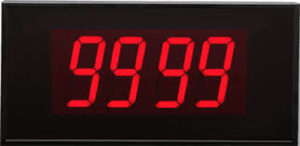TWIN TANK
SINGLE TANK
Water softeners come in all shapes and sizes but can be sub divided into a number of categories which helps understand the way they work and also simplify any decision making processes when choosing a method of removing or reducing limescale in either a domestic or commercial environment.
Firstly, you need to be clear about the term ‘water softener’ and ‘water conditioner’ and the difference in the two types of product.
Salt based water softeners are the only ones that actually soften water as they are physically removing the limescale from the water, whereas limescale inhibitors and non salt water conditioners can only change the crystal structure (limescale forming minerals) and prevent particles from attaching to surfaces. In this type of product, the limescale remains in the water but is prevented from attaching whilst the water is moving. Water in a property that has a scale eliminator fitted will still show evidence of limescale.
Salt water softeners, need a brine solution to flush the resin beads held in the resin tank. This is called regeneration and is effectively washing the resin in preparation for its next sequence of water softening. This brine solution is then sent to via the waste connection to a drain. Depending on the way that the softener regenerates, can be subdivided into timed or metered water softeners.
Timed softeners are pre-programmed to regenerate at set intervals, regardless of the amount of water that they use and regardless of the number of people in a property. Metered water softeners will take water consumption into account and regenerate only when necessary. Some models are also clever enough to work out when they are going to be needed most, for example when the household members take their showers and baths and remember this information
There are advantages and disadvantages for both these types of softener and your choice will fall to the one that will give the best results for your particular family arrangement and personal requirements.
Salt water softeners vs non salt water conditioners
Salt water softeners
| For | Against |
| Produce soft water from hard water | Require maintenance (addition of salt tablets or blocks to the brine tank) |
Act by turning water hardness minerals into sodium minerals | Regeneration waste water is sent to waste |
| Reduce soap and detergent usage | |
| Soft water leaves hair and skin softer | |
| Extended life of appliances (washing machines, dishwashers, heating systems) | |
| Extended life and improved appearance of household items that come into contact with hard water (taps, sinks etc) |
Non- salt water softeners
| For | Against |
| Low maintenance | Limescale minerals are not removed from water – just prevented from sticking to surfaces where the water is moving |
| No waste water | No reduction in soap and detergent usage |
| Less space needed for equipment | Not suitable for properties where hot water is kept in a storage tank |
A scale out system or non salt water conditioner will save time on maintenance and can cost less than a more traditional salt water softener system but you will not enjoy all the benefits provided by soft water.
Timer Model vs Metered Model Water Softeners
Metered models only regenerate when necessary and as a result they use less salt and consume less water which makes them much more economical. However, they do tend to be more expensive as they are more sophisticated than timer models. Timer models can be regarded as an entry level product.
If you live in an area with hard water problems, some sort of lime-scale control solution can solve most problems caused by hard water. Depending on your budget, your particular requirements and space considerations, you can opt for classic salt based system or lime scale inhibiting solution.

